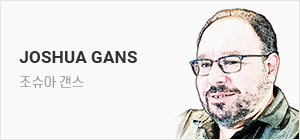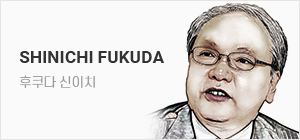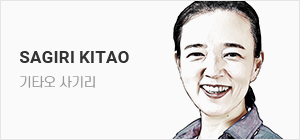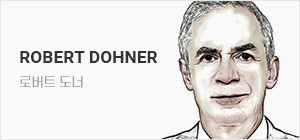

When asked about their reasons for not achieving their desired family size, Japanese couples consistently cite the overwhelming financial burden of childcare and education as the primary obstacle. Today, parents allocate significantly more resources to each child compared to previous decades. The financial burden encompasses not only tuition and school fees but also expenditures on a myriad of extracurricular activities, as well as enrollment in evening and weekend cram schools, often extending into school holidays. Astonishingly, many parents of elementary school-aged children spend more than 1 million yen annually on cram schools alone, aimed at preparing their children for junior high school entrance exams. Furthermore, a considerable number of parents opt to retain private tutors, and devote their own time to assisting with homework, managing drop-offs and pickups for various activities, as well as preparing lunch and dinner boxes for children to eat in classrooms. The situation is similar in Korea.
What motivates this fervor for education? If the returns on educational investment are substantial enough to outweigh the costs, it becomes logical for parents to allocate resources towards enhancing their children‘s education. The “skill premium”, often quantified as the wage ratio between college graduates and those without a college degree, serves as a key metric in this regard. In the United States, the skill premium increased significantly over recent decades, from approximately 1.7 in the early 1980s to 2.6 in the 2010s. This phenomenon is considered one of the factors contributing to escalating costs of education and the growing incentives to pursue a higher degree. However, in contrast, the skill premium has experienced comparatively modest growth in Japan and Korea. This can be attributed in part to a substantial increase in the pool of college graduates in the labor market.
Moreover, in countries such as Japan and Korea, the sustained decline in fertility rates over recent decades has led to a dwindling population of high school students, consequently opening up substantial capacity within college systems. Given the persistently low fertility rates at present, children born today belong to even smaller cohorts, resulting in fewer peers to compete with for college entrance, thus lowering the hurdle for college admission.
Simply gaining admission to any college is not the primary objective for parents. As highlighted in a study by Lee and Koh (2023), there exists significant salary disparity among highly skilled workers based on college rankings in Korea. The wage premium for graduates from top-ranking colleges expands from approximately 25% in their late 20s to over 50% by their early 40s. Consequently, for parents prioritizing the education of their children for the prospect of higher lifetime earnings, it is not merely the overall skill premium of all college graduates that concerns them. Rather, they compete to secure spots for their children in top-tier colleges. The Korean Educational Development Institute (KEDI) Poll conducted in 2019 revealed that the primary motivation behind providing private education to children is to stay ahead of others. Parents are driven by strong incentives to ensure their children excel, not solely in absolute terms, but in comparison to their peers. This phenomenon, known as “status externality,” underscores the emphasis place by parents on their relative standing. This mindset contributes to the prevalence of education fervor observed not only in Korea but also in other East Asian countries, including Japan and China.
| ||
| Education Fever: Society, Politics, and the Pursuit of Schooling in South Korea |
Recent research, forthcoming in the American Economic Review, conducted by economists, Kim, Tertilt and Yum, tries to quantify the influence of status externality on fertility rates in Korea. Leveraging episodes of late-night curfews enacted in provinces, which prohibited private education programs after 10 or 11PM, the study data of educational spendings during the 2009-2015 period, during which there were variations of curfews across provinces. Their findings indicate the presence of spill-over effects of education spending, affirming the existence of status externality. The reduction in education spending of wealthy families affected by the curfew also contributed to a decrease in education expenditure among socioeconomically disadvantaged families, who were not directly affected by the curfew changes.
They show that status externality plays a pivotal role in accounting for low fertility rates in Korea, demonstrating that fertility rates would be 28% higher in the absence of such externalities. Status externality necessitates parents to allocate more resources to children, resulting in elevated expected costs of raising children. Consequently, the high financial burden incentivizes parents to either have fewer children or opt for childlessness.
In economies characterized by relatively mild inequality like Korea, this phenomenon impacts households across all income levels, particularly exerting a more pronounced effect on low-income families who spend a larger proportion of their income on education. Using longitudinal data from the Korean Labor and Income Panel Study (KLIPS), Kim and coauthors illustrate that parents in the bottom 20% of the income distribution allocate more than 8% of their income towards education, the highest proportion across all income quintiles.
In order to alleviate the adverse fertility consequences associated with status externality, their research suggests that implementing an education investment tax of 22%, in conjunction with pro-natal transfers, could raise the fertility rate by 11% and decrease education spending by approximately 40%. Furthermore, this policy would also decrease the proportion of couples opting for childlessness.
| ||
| The number of applicants for Japan‘s University Entrance Examination Common Test, has fallen below 500,000 for the first time in 32 years amid a declining birthrate.Examinees take the University Entrance Examination Common Test at an examination center in Tokyo on Jan. 13. [Yonhap] |
Government‘s Dilemma
In light of the challenges posed by excessive education and escalating childcare expenses in deterring childbirth, the government faces a critical decision. Should they implement measures such as banning private education and discouraging over-education, or should they instead opt for policies such as subsidizing tuition fees and providing assistance to parents for covering the costs of cram schools? These options represent opposed approaches presenting the government with a tough dilemma.
While banning private education or imposing taxes on cram schools might alleviate the education fever to some extent, they may not effectively reduce the anticipated costs of childcare or boost fertility rates as anticipated. Instead, such measures could inadvertently drive these services underground, fostering informal educational channels within the black market. This shift may burden parents with additional time-consuming searches for viable alternatives and could result in even higher prices within a limited market. For those unable to afford or access expensive informal tutoring, the need to invest personal time may become imperative. Consequently, only disadvantaged parents may give up pursuing additional education altogether, exacerbating intergenerational inequality. Moreover, the high costs and uncertainty surrounding educational choices may dissuade prospective parents starting families in the first place.
In 2021, the Chinese government implemented a ban on private cram schools, and it remains uncertain whether this policy will have the intended effect of bolstering fertility rates. However, there are already indications that parents are seeking costly tutoring alternatives for their children. In stark contrast to China‘s ban and Korea’s curfews, the Tokyo governor introduced a means-tested subsidy for cram school tuition fees for junior high and high school students. This policy aims to alleviate the financial burden of low-income families and mitigate inequality in accessing essential preparation for entrance exams.
There is no denying that the growth of the economy is driven by education and skill development. A healthy demographic structure and the influx of young workers into the labor market are equally indispensable. Consequently, governments face the challenge of simultaneously addressing the decline in fertility rates while fostering skill formation and promoting productivity growth.
If lifetime income is contingent upon initial career placement and college prestige serves as a key signaling mechanism, mitigating the current trend of excessive education incentives will be a formidable challenge. Addressing the root of this issue is crucial. This may entail creating avenues for career advancement irrespective of alma mater, or introducing greater flexibility and mobility in the labor market post-entry. Furthermore, facilitating upward mobility on the career ladder and enabling individuals to align their career paths with various life events are desirable objectives. Crucially, allocating enough resources to enhance the quality of compulsory education and reducing disparities in educational access from the bottom up are essential steps.


왜 원하는 만큼 아이를 낳지 않느냐는 질문을 받았을 때 일본 부부들은 일관되게 육아와 교육에서 오는 경제적 부담을 가장 큰 장애물로 꼽는다. 오늘날 부모들은 지난 세대에 비해 자녀 각각에게 훨씬 더 많은 자원을 할당한다. 이 경제적 부담에는 등록금과 각종 학교 수수료뿐 아니라 다양한 과외 활동비와 저녁과 주말 및 종종 방학에도 다니는 학원비까지 포함된다. 놀랍게도 초등학생 자녀를 둔 많은 부모들이 중학교 입시 준비를 위해 학원비로만 연간 100만 엔 이상을 지출한다. 게다가 상당 수의 부모들이 개인과외 교사를 고용하고 또 본인의 시간을 투자해 숙제를 봐주고, 다양한 활동에 데려다 주고 데려오며, 교실에서 먹을 점심 및 저녁 도시락을 준비한다. 이러한 상황은 한국도 비슷하다.
이런 교육열의 원인은 과연 무엇일까? 교육에 대한 투자의 수익이 비용을 능가할 만큼 충분히 크다면 부모가 자녀의 교육에 자원을 배분하는 것은 논리적인 선택이다. 보통 대졸자와 대학 졸업장이 없는 사람 사이의 임금 배율로 정량화되는 “숙련 프리미엄(Skill Premium)”은 이와 관련된 대표적인 지표다. 지난 몇 십년 동안 미국에서 이 숙련 프리미엄은 1980년대 초 약 1.7에서 2010년대 2.6으로 크게 증가했다. 이러한 현상은 교육비를 끌어올리고 고급 학위 취득에 대한 동기를 높이는 요인 중 하나로 간주된다. 그러나 이와는 대조적으로 일본과 한국에서는 숙련 프리미엄이 비교적 완만하게 증가했다. 이는 부분적으로 노동 시장에서 대졸자의 수가 상당히 증가했기 때문일 수 있다.
더욱이, 일본과 한국 같은 국가에서는 최근 수십 년간 지속된 저출산으로 인해 고등학생 인구가 감소했고, 결과적으로 전반적인 대학 시스템에 상당한 수용력이 생겼다. 현재의 지속적으로 낮은 출산율을 고려했을 때, 오늘날 태어나는 아이들은 훨씬 더 작은 코호트(집단)에 속하게 될 것이고, 그 결과 대입을 위해 경쟁하는 또래의 수가 줄어들어 대학 입학의 문턱이 낮아질 것이다.
단순히 아무 대학에나 들어가는 것이 부모들의 주요 목표는 아니다. 2023년에 진행된 한 연구에 따르면, 한국에선 고숙련 근로자들 사이에도 대학서열에 따라 상당한 급여차가 존재한다. 명문대 졸업생의 임금 프리미엄은 20대 후반엔 약 25%였다가 40대 초반에는 50% 이상으로 높아진다. 그렇기 때문에 더 높은 평생소득을 위해 교육을 우선시하는 부모들의 관심사는 전체 대졸자들의 전반적인 숙련 프리미엄이 아니다. 이들은 자녀를 일류 대학에 보내기 위해 경쟁한다. 2019년 한국교육개발원(KEDI)이 실시한 여론조사에 따르면, 자녀에게 사교육을 제공하는 주된 동기는 남들보다 앞서기 위한 것으로 나타났다. 부모들은 자녀를 절대적인 잣대뿐 아니라 또래들에 비해 더 탁월하게 만들려는 강력한 동기에 의해 움직인다. “지위 외부성”이라고 알려진 이 현상은 부모들이 상대적인 지위를 얼마나 중요시하는지 잘 보여준다. 바로 이러한 사고방식이 한국뿐 아니라 일본, 중국 등의 동아시아 국가에서 관찰되는 교육열의 확산에 기여한다.

American Economic Review에 곧 발표될 최근 연구는 지위 외부성이 한국 출산율에 미치는 영향을 정량화하고자 시도한다. 이 연구는 밤 10-11시 이후에는 사교육을 금지한 학원 영업시간 제한 사례를 활용하여, 지역 별로 학원 영업시간에 차이가 있었던 2009-2015년 동안의 교육비 지출을 살펴본다. 연구 결과, 교육비 지출의 파급효과가 존재했고, 이는 지위 외부성이 실재함을 확인해 주고 있다. 학원 영업시간 제한으로 인해 부유층의 교육비 지출이 감소하면서 영업시간 변경의 직접적인 영향을 받지 않았던 사회경제적 취약계층의 교육비도 감소한 것이다.
이 연구는 지위 외부성이 한국의 낮은 출산율을 설명하는 데 중추적인 역할을 한다는 것을 보여주고 있다. 이러한 외부성이 없을 경우 출산율이 28% 더 높아질 것이라고 계산했다. 지위 외부성으로 인해 부모들은 더 많은 자원을 자녀에게 할당하고, 이는 예상되는 양육 비용이 끌어올린다. 그 결과, 높은 경제적 부담으로 인해 부부는 자녀를 적게 낳거나 아예 낳지 않기로 선택한다는 것이다.
한국과 같이 상대적으로 불평등이 약한 경제에서는 이러한 현상이 모든 소득 수준의 가구에 영향을 미치며, 특히 소득 대비 교육비 지출 비중이 높은 저소득층에 더 뚜렷한 영향을 준다.

정부의 딜레마
과도한 교육열과 높은 양육비로 사람들이 아이 낳기를 단념하면서 생기는 여러 가지 문제를 고려했을 때, 이제 한국 정부는 중대한 결정을 내려야 한다. 사교육을 금지하고 과도한 교육을 억제하는 조치를 취할 것인가? 아니면 학비 보조수당을 지급하고 학원비를 지원하는 정책을 선택해야 할 것인가? 이 완전히 상반된 두 가지 접근방식 사이에서 지금 정부는 어려운 딜레마에 빠져 있다.
사교육을 금지하거나 학원에 세금을 부과하면 교육열을 어느 정도 완화할 수는 있겠지만, 양육 비용을 낮추거나 출산율을 높이는 데는 예상만큼 효과적이지 않을 수 있다. 오히려 이러한 조치가 의도치 않게 사교육 시장을 음성화시켜 암시장 내에서 불법적인 사교육 경로가 생겨날 수 있다. 이렇게 되면 부모에겐 적절한 대안을 찾는 데 추가적으로 시간을 써야 하는 부담이 생길 수 있고, 제한된 시장 안에서 사교육 비용이 심지어 더 올라갈 수도 있다. 값비싼 불법 개인과외를 부담할 여유가 없거나 혹은 이에 접근할 수 없는 사람들은 본인의 시간을 투자해야만 할 것이다. 그 결과, 형편이 어려운 부모들만 추가적인 교육을 추구하는 걸 완전히 포기하게 될 것이고, 이는 세대 간 불평등을 악화시킬 수 있다. 더욱이, 교육적 선택을 둘러싼 높은 비용과 불확실성으로 인해 예비 부모들이 애초에 가족을 꾸리는 것을 단념하게 만들 수도 있다.
2021년 중국 정부는 사교육 금지 정책을 시행했으나, 이 정책이 의도한 출산율 제고 효과를 가져올 것인지는 아직 미지수다. 그러나 중국 부모들 사이에서는 이에 대한 대안으로 값비싼 과외를 찾는 조짐이 이미 보이고 있다. 중국의 금지령과 한국의 영업시간 제한과는 완전히 대조적으로 도쿄 도지사는 자산조사 결과에 따라 중고등학생의 학원비를 지원하는 보조금 제도를 도입했다. 이 정책은 저소득층의 경제적 부담을 완화하고 필수적인 입시 준비에 대한 불평등을 줄이는 것을 목표로 한다.
교육과 역량 개발이 경제 성장을 주도한다는 사실에는 의심의 여지가 없다. 또한, 건강한 인구 구조와 젊은 근로자의 노동 시장 유입도 필수 불가결하다. 따라서, 정부는 저출산 문제를 해결하는 동시에 역량 형성 및 생산성 향상을 촉진해야 하는 과제에 직면해 있다.
평생소득이 최초의 경력을 어떻게 시작하는지에 달려있고 대학 서열이 계속해서 주요 신호 매커니즘으로 작용한다면, 현재의 과도한 교육열을 완화하는 것은 쉽지 않을 도전일 것이다. 이 문제의 근인을 해결하는 것이 중요하다. 졸업한 학교와 상관없이 경력을 발전시킬 수 있는 경로를 마련하거나 노동 시장 진입 이후의 유연성과 이동성을 향상시키는 일 등이 해결책에 포함될 수 있다. 또한, 경력의 사다리에서 상향 이동을 촉진하고, 여러 가지 개인적인 상황에 맞게 경력 경로를 조정할 수 있도록 하는 것도 바람직한 목표일 것이다. 결정적으로 의무교육 품질 향상을 위해 충분한 자원을 할당하고 상향식 접근방식으로 교육에 대한 접근 격차를 해소하는 것 또한 필수적인 과정일 것이다.
bonsang@heraldcorp.com














